Review Article
Volume 3 Issue 4 - 2018
Holistic Approach in Management of Oral Cancer – A Review
Department of Oral Medicine and Radiology, Navodaya Dental College, Raichur, Karnataka, India
*Corresponding Author: Asmita Nandre, Department of Oral Medicine and Radiology, Navodaya Dental College, Raichur, Karnataka, India.
Received: July 05, 2018; Published: July 13, 2018
Abstract
Oral cancer is one of the most common causes of morbidity and mortality today. Up to 85% of patients experience weight loss or malnutrition and long-term psychological distress during the cancer therapy. Hence, the challenge not only lies in controlling the cancer cells, but also in reducing its side effects and improving the quality of life of patients and the overall rate of survival. This article aims at addressing the issues of fall out of cancer treatment, improving the quality of life, minimizing the psychological distress and achieving a better survival rate.
Key words: Oral cancer; Treatment; Nutrition; Stress management; Quality of life
Introduction
Cancer is one of the most leading causes of morbidity and mortality today, with more than 10 million new cases every year as well as an alarming death rate that accounts for more than 6 million deaths per year. [1] According to published literature, around 43% of cancer deaths were due to tobacco use, unhealthy diets, alcohol consumption, inactive lifestyles Infection and low-income. [2] Disadvantaged groups are generally more exposed to avoidable risk factors such as environmental carcinogens, alcohol, infectious agents, and tobacco. Cancer treatment has evolved over the last decades with better and more precise therapies available to keep a check on the cancer cells. Worldwide, encouraging research is being carried out to find a complete cure for this dreaded disease haunting mankind. The relevance of such a breakthrough becomes even more relevant in the present time due to a 3-4 fold rise in the incidence and prevalence of oral cancer.
Treatment of oral cancer is ideally a multidisciplinary approach involving the efforts of surgeons, radiation oncologists, chemotherapy oncologists, dental practitioners, nutritionists, psychologist and rehabilitation and restorative specialists. The actual curative treatment modalities are usually surgery and radiation, with added chemotherapy to decrease the possibility of metastasis and to sensitize the malignant cells to radiation. It’s also preferred for those patients who have confirmed distant metastasis of the disease. Prognosis of oral cancer is poor with a five year survival rate of less than 50%. Local recurrences as well as lymph node metastasis occur in a significant number of the affected people while distant metastasis is often rare. [3] Surgery, radiation therapy, and chemotherapy are the designated treatments to stop the spread of cancer by killing the cancerous cells.
Unfortunately these modalities of treatment are like double edged sword. On one hand they are amicable in saving the life of individuals suffering from cancer, but on the other they have inherent and long lasting side effects. In the process of radiation therapy and chemotherapy, many of the body's healthy cells are also damaged or destroyed. Most of the scientific literature shows that weight loss drastically increases the mortality rate for most types of cancer, while also lowering the response to chemotherapy.Chemo and radiation therapy are sufficient biological stressors alone to induce malnutrition. [4]
There is also considerable evidence suggesting that cancer patients suffer from substantial and long-term psychological distress associated with different forms of cancer and its medical treatment. [1] Hence, the challenge not only lies in controlling the cancer cells, but also in reducing its side effects and improving the quality of life of patients and the overall rate of survival. This article aims at addressing the issues of fall out of cancer treatment, improving the quality of life, minimizing the psychological distress and achieving a better survival rate.
Methodology
An extensive literature search was performed to create a comprehensive narration in the management of oral cancer and its outcome. This was done by searching PubMed, and Google Scholar for the key terms: oral cancer, treatment, nutrition, natural compounds and yoga. Meditation.
Discussion
Benefits of Nutrition in Cancer Treatment
1. Avoiding malnutrition & Reducing the toxic effects of chemotherapy & radiation
40% or more of cancer patients actually die from malnutrition, not from the cancer. [5] Nutrition therapy is essential to arrest malnutrition. Adequately nourished patients experience lesser nausea, fatigue, immune- suppression, alopecia, and systemic toxicity compared to the patients on routine oncology programs. Antioxidants like lycopene, beta carotene, vitamin C, vitamin E, and selenium appear to enhance the effectiveness of chemo, radiation, and hyperthermia, while minimizing damage to the patient's normal cells, thus making therapy more of a "selective toxin." [6] An optimally-nourished cancer patient can better tolerate the rigors of cytotoxic therapy. Numerous studies have proved the efficacy of Nutritional counseling (NC) and oral nutritional supplements (ONS) in head and neck cancer patients receiving radiotherapy (RT) singly or in combination with or chemotherapy (CRT). [7-11] (Table-1)
1. Avoiding malnutrition & Reducing the toxic effects of chemotherapy & radiation
40% or more of cancer patients actually die from malnutrition, not from the cancer. [5] Nutrition therapy is essential to arrest malnutrition. Adequately nourished patients experience lesser nausea, fatigue, immune- suppression, alopecia, and systemic toxicity compared to the patients on routine oncology programs. Antioxidants like lycopene, beta carotene, vitamin C, vitamin E, and selenium appear to enhance the effectiveness of chemo, radiation, and hyperthermia, while minimizing damage to the patient's normal cells, thus making therapy more of a "selective toxin." [6] An optimally-nourished cancer patient can better tolerate the rigors of cytotoxic therapy. Numerous studies have proved the efficacy of Nutritional counseling (NC) and oral nutritional supplements (ONS) in head and neck cancer patients receiving radiotherapy (RT) singly or in combination with or chemotherapy (CRT). [7-11] (Table-1)
| Author | Number of patients | Cancer therapy | Results |
| Goncalves Diaz., et al. (2005) [7] | Group 1: 32 pts; adapted oral diet; Group 2: 16 pts; enteral nutrition via a NG tube (6x/day); Group 3: 16 pts; oral diet associated to ONS between meals (3×/day). |
RT | All of the groups presented an increase in the ingestion of calories and proteins (p < 0.001). |
| Ravasco., et al. (2005) [8] | Group 1: 25 pts; NC with regular foods; Group 2: 25 pts; usual diet with ONS; Group 3: 25 pts; intake ad libitum |
CRT | Reduction of anorexia, nausea/vomiting, xerostomia, and dysgeusia: Group 1: 90% of pts; Group 2: 67% of pts; Group 3: 51% of pts |
| Paccagnella., et al. (2010 ) [9] | Group 1: 33 pts; early nutritional intervention before they were submitted to CRT; Group 2: 33 pts; CRT alone |
CRT | The percentage of patients who had radiotherapy breaks >5 days for toxicity was significantly lower in the early intervention group than in the standard practice group as well as the number of days of radiotherapy delayed for toxicity and the frequency of hospitalization. |
| Van den Berg, (2010) [10] | Group 1: 20 pts; individual dietary counseling; Group 2: 18 pts; standard dietary counseling |
CRT | Early and intensive individualized dietary counseling by a dietitian produces clinically relevant effects in terms of decreasing weight loss and malnutrition compared with standard nutritional counseling. |
| Valentini., et al. (2012) [11] | 21 pts with NC and ONS | CRT | Head and neck cancer receiving CRT, nutritional counseling combined with ONS was associated with relatively low CRT-related toxicity |
Table 1: Role of nutrition in head and neck cancer patients receiving radiotherapy or chemoradiotherapy.
2. Bolster immune functions
The data linking nutrient intake to the quality and quantity of immune factors that fight cancer is available in abundance. Immune system enhanced by Vitamins: A, C, E, B-6, Minerals: Zn, Cr, Se, Amino acids: arg, gluta, Herbals: Astragalus Cats claw, Olive leaf extract Foods: yogurt, garlic, enzymes, green leafy, shark oil, colostrum, benefits cancer patients. [12]
The data linking nutrient intake to the quality and quantity of immune factors that fight cancer is available in abundance. Immune system enhanced by Vitamins: A, C, E, B-6, Minerals: Zn, Cr, Se, Amino acids: arg, gluta, Herbals: Astragalus Cats claw, Olive leaf extract Foods: yogurt, garlic, enzymes, green leafy, shark oil, colostrum, benefits cancer patients. [12]
Burdock Root (67.7%), Slippery Elm (5%) Sheep Sorrel (21.6%) Turkey Rhubarb Root (5%) - This herb shows promise for helping to slow down cell changes and stop cancer. & it has anti-tumor activity. [13] It contains vitamin A and selenium, which helps to eliminate free radicals. Essiac tea is most effective when brewed from the original herbs that have been organically grown. It can be combined with other anti-cancer treatments. [14]
3. Sugar feeds cancer
Tumors are primarily obligate glucose metabolizers, meaning "sugar feeders". About 20% of calories consumed are from refined sucrose, but patients often manifest poor glucose tolerance curves due to stress, obesity, low chromium and fiber intake, and sedentary lifestyles. Whole grains should be preferred to processed (refined) grains, sugars and the consumption of refined carbohydrates, including pastries, sweetened cereals, soft drinks, and sugars should be reduced. [15]
Tumors are primarily obligate glucose metabolizers, meaning "sugar feeders". About 20% of calories consumed are from refined sucrose, but patients often manifest poor glucose tolerance curves due to stress, obesity, low chromium and fiber intake, and sedentary lifestyles. Whole grains should be preferred to processed (refined) grains, sugars and the consumption of refined carbohydrates, including pastries, sweetened cereals, soft drinks, and sugars should be reduced. [15]
4. Anti-proliferative factors
Numerous nutritional factors affect the progress towards malignancy by reducing the unregulated growth of cancer cells. A few nutrients like selenium, vitamin K, vitamin E succinate and the fatty acid EPA (Eicosapentaenoic acid) alter the genetic expression of tumours. [16]
Numerous nutritional factors affect the progress towards malignancy by reducing the unregulated growth of cancer cells. A few nutrients like selenium, vitamin K, vitamin E succinate and the fatty acid EPA (Eicosapentaenoic acid) alter the genetic expression of tumours. [16]
Essential Natural Compounds Having Anticancer Property Curcumin
This is a plant phenol widely used as a spice (curry) and food-coloring agent. In vivo and in vitro studies have demonstrated that it may prevent initiation of DNA damage and is involved in anti-promotion mechanisms such as apoptosis. [19] A number of animal studies have shown that curcumin is effective in inhibiting carcinogenesis in the skin, colon, stomach mammary gland and oral cavity. [17]
This is a plant phenol widely used as a spice (curry) and food-coloring agent. In vivo and in vitro studies have demonstrated that it may prevent initiation of DNA damage and is involved in anti-promotion mechanisms such as apoptosis. [19] A number of animal studies have shown that curcumin is effective in inhibiting carcinogenesis in the skin, colon, stomach mammary gland and oral cavity. [17]
Gingerol
Gingerol is a natural polyphenol in Ginger. It can induce apoptic changes in cancer cells of oral cavity. [18]
Gingerol is a natural polyphenol in Ginger. It can induce apoptic changes in cancer cells of oral cavity. [18]
Neem
Neem which contains Gallic acid, catechin, and epicatechin are phytochemicals related to oral cancer, which have a carcinogen detoxifying enzyme, glutathione. Catechin can inhibit the production of metalloproteases, reducing the invasion and migration and inducing the apoptosis of cancer cells. It has anti-inflammatory potential by suppressive activation of nuclear factor κ-b (NFκ-b), which induces the apoptosis of cancer cells. [19]
Neem which contains Gallic acid, catechin, and epicatechin are phytochemicals related to oral cancer, which have a carcinogen detoxifying enzyme, glutathione. Catechin can inhibit the production of metalloproteases, reducing the invasion and migration and inducing the apoptosis of cancer cells. It has anti-inflammatory potential by suppressive activation of nuclear factor κ-b (NFκ-b), which induces the apoptosis of cancer cells. [19]
Mushrooms
Mushrooms such as shiitake, maitake, reishi, and some agaricus species fight against cancer and improve the immune system because of the presence of certain glucans and polysaccharide peptides (proteoglycans). [23] Purified bioactive compounds derived from medicinal mushrooms are a potentially new and important source of anticancer agents. Four mushroom samples exhibit excellent mutagenic and anticancer activity. [20]
Mushrooms such as shiitake, maitake, reishi, and some agaricus species fight against cancer and improve the immune system because of the presence of certain glucans and polysaccharide peptides (proteoglycans). [23] Purified bioactive compounds derived from medicinal mushrooms are a potentially new and important source of anticancer agents. Four mushroom samples exhibit excellent mutagenic and anticancer activity. [20]
Spirulina
The blue–green microalgae Spirulina, is used in daily diets of natives in Africa and America. Spirulina is the healthiest food containing antioxidants, phytonutrients, essential fatty acids, probiotics, and nutraceuticals. Spirulina is an excellent source of protein, beta-carotene, gamma linolenic acid, B-vitamins, minerals, chlorophyll, sulfolipids, glycolipids, superoxide dismutase, phycocyanin, and enzymes. It is cultivated, processed, and marketed globally for its wealthy dietary products and has been extensively used in health foods, pharmaceutical, and specialty feed sectors. Spirulina has got no side effects and is non-toxic in nature. The nutrients present in Spirulina boost the immune system and enhance the body’s ability to generate new blood cells to prevent disease and cancer. [21]
The blue–green microalgae Spirulina, is used in daily diets of natives in Africa and America. Spirulina is the healthiest food containing antioxidants, phytonutrients, essential fatty acids, probiotics, and nutraceuticals. Spirulina is an excellent source of protein, beta-carotene, gamma linolenic acid, B-vitamins, minerals, chlorophyll, sulfolipids, glycolipids, superoxide dismutase, phycocyanin, and enzymes. It is cultivated, processed, and marketed globally for its wealthy dietary products and has been extensively used in health foods, pharmaceutical, and specialty feed sectors. Spirulina has got no side effects and is non-toxic in nature. The nutrients present in Spirulina boost the immune system and enhance the body’s ability to generate new blood cells to prevent disease and cancer. [21]
Stress Management during cancer therapy (Psycho-oncology)
The word yoga is derived from the Sanskrit root Yuj, which means to join or to yoke. In philosophical terms, yoga refers to the union of the individual self with the universal self. Yoga as a way of life, including diet and lifestyle as well as yogasanas, pranayama, and meditation contributes to the prevention and long-term remission from cancer. Yoga can reverse epigenetic changes against chronic diseases. Yoga treatment may reduce the chances of carcinogenesis. Physical exercise has the ability to kill the emerging cancerous cells naturally. Also performing breathing exercises like pranayama and yoga postures, help individuals in dealing with cancer in a calm manner. Maintaining a healthy immune system is vital to fight the cancerous cells arising in the body, as stress weakens the immune system; yoga and meditation are recommended to alleviate stress. [22]
The word yoga is derived from the Sanskrit root Yuj, which means to join or to yoke. In philosophical terms, yoga refers to the union of the individual self with the universal self. Yoga as a way of life, including diet and lifestyle as well as yogasanas, pranayama, and meditation contributes to the prevention and long-term remission from cancer. Yoga can reverse epigenetic changes against chronic diseases. Yoga treatment may reduce the chances of carcinogenesis. Physical exercise has the ability to kill the emerging cancerous cells naturally. Also performing breathing exercises like pranayama and yoga postures, help individuals in dealing with cancer in a calm manner. Maintaining a healthy immune system is vital to fight the cancerous cells arising in the body, as stress weakens the immune system; yoga and meditation are recommended to alleviate stress. [22]
Sudarshan Kriya, Pranayama, and Yoga
Yoga, meditation and pranayama are centuries old, time tested practices; these are known to relax mind and energize the body. Recently, Sudarshan Kriya has been introduced by Sri Sri Ravi Shankar ji. The process is introduced to participants through a 22-24 hour structured program called as Art of Living (AOL) workshop, spread over 6 days. Sudarshan Kriya- rhythmic cyclical breathing of slow, medium and fast cycles is preceded by Ujjayi Pranayam - slow breathing 3 cycles per minute; it is a forced inspiration and expiration against airway resistance, Bhastrika Pranayama - rapid exhalation at 20-30 cycles per minute and brief ‘Om’ chanting. These processes are practiced while sitting with eyes closed and awareness focused on breath. Process ends with a ten minutes rest in a tranquil supine position. This can be followed by a 20-minute meditation. [23]
Yoga, meditation and pranayama are centuries old, time tested practices; these are known to relax mind and energize the body. Recently, Sudarshan Kriya has been introduced by Sri Sri Ravi Shankar ji. The process is introduced to participants through a 22-24 hour structured program called as Art of Living (AOL) workshop, spread over 6 days. Sudarshan Kriya- rhythmic cyclical breathing of slow, medium and fast cycles is preceded by Ujjayi Pranayam - slow breathing 3 cycles per minute; it is a forced inspiration and expiration against airway resistance, Bhastrika Pranayama - rapid exhalation at 20-30 cycles per minute and brief ‘Om’ chanting. These processes are practiced while sitting with eyes closed and awareness focused on breath. Process ends with a ten minutes rest in a tranquil supine position. This can be followed by a 20-minute meditation. [23]
Sudarshan kriya and Pranayam, as highlighted above, induces relaxation, increases antioxidant defense and natural killer (NK) cells in the body. These observations would have important implications for cancer: as they would suggest that (i) Sudarshan kriya and Pranayam may have a preventive role against cancer (ii) Sudarshan kriya and Pranayam may be effective as a secondary preventive measure, after curative treatment of cancer and (iii) in metastatic cancer, Sudarshan kriya and Pranayam may delay progression of cancer, improves survival and quality of life. [24]
Meditation is art of doing nothing with eyes closed. One gets into the awareness of nothingness (emptiness) or infinite space. Several techniques are available to make one reach a meditative state. Meditation can play a useful role for cancer patients. It can relieve the stress and the physical and emotional pain. Meditation can be helpful to some people in dealing with side effects of treatment and in overcoming the sense of loss of control and to gain mastery over their lives. It may be most useful when treatments have ended and the person is attempting to return to normal activities as a survivor. It can also help the people to change lifestyle to promote health and reduce the risk of recurrence. [25]
Meditation has been used to great advantage in caring for terminally ill and dying patients in hospice settings and at home. This involves the use of meditation to relieve physical and emotional pain and suffering due to the disease. It is useful when integrated into a comprehensive palliative care approach, which includes, discussing death and dying and feeling of loss within the context the state and the thoughts that arise during meditation. Many dying patients also find that calmness and silence of meditation bring profound feeling of acceptance, wellbeing and inner peace. [26] Healthy persons at higher genetic risk of cancer also may be drawn to meditation to reduce environmental and life style risk factors and to control anxiety and stress. [27]
All these techniques can be helpful to patients with cancer. Their practice enhances the coping ability of patients. These measures change the hopeless and helpless attitude to the active fighting spirit. They reduce the stress associated with the diagnosis as well as treatment of cancer. By reducing the stress they may alter the treatment outcome. On account of the positive effect of meditation on NK cell cytotoxicity and consequent up regulation of immune system, meditation can lead to prevention as well as delayed progression of cancer. Various studies shows improvement in sleep quality, mood, stress, cancer –related distress & overall quality of life. [25-27] (Table-2)
| Author | Study design | Yoga & meditation intervention | Result |
| Cohen., et al. (2004) [25] | RCT of 39 particpants (stage I – IV lymphoma) Tibetan yoga for cancer patients | Intervention consisted of 7 weekly sessions that included 3 components: controlled breathing & visualization; Mindfulness. | Significant improvements in overall sleep quality compared to controls, including falling asleep more quickly, sleeping longer, and using fewer sleep medications. |
| Cohen., et al. (2005) [26] | RCT of 38 participants were randomly assigned to either the intervention group. The sample included a mixed group of cancer survivors (primarily breast cancer survivors) who were a minimum of 3 months post treatment (mean = 56 months post diagnosis) | Weekly 75-minute classes, participants were taught modified versions of yoga postures that involved gentle stretching and strengthening exercises and finished with 15 minutes of relaxation in corpse pose | At post intervention, yoga group participants reported lower levels of total mood disturbance and stress and higher levels of global quality of life and pain than control group |
| Moadel., et al. (2004) [27] | Stage I–III breast cancer (n = 59), wait-list control group (n = 29). | The 12- week intervention consisted of weekly 90-minute yoga classes based on Hatha yoga that included gentle stretching, breathing exercises, and meditation/sitting relaxation. | The control group reported significant increase in symptoms related to the central nervous system (eg, headaches, numbness) And reported significant improvements in emotional well- being over the course of the study. |
Table 2: Effect of yoga & meditation intervention on cancer patients receiving chemotherapy & radiotherapy.
Conclusion
The need of hour is to have a holistic approach in treating oral cancer. Adopting ayurvedic medicines (natural & organic compounds), nutritious diet, yoga and meditation & naturopathy to compliment the cancer treatment and thereby improving the quality of life of cancer affected individuals which will improve the rate of survival of patients.
References
- World Health Organization. The world health report 2004: changing history Geneva: WHO, (2004).
- Lopez AD., et al. Global burden of disease and risk factors. Washington: The Word Bank/Oxford University Press. (2006).
- Melhotra R., et al. “Prevalence of Oral Pre-malignant and Malignant Lesions at a Tertiary Level Hospital in Allahabad, India”. Asian Pacific Journal of Cancer Prevention 9.2 (2008): 263-265.
- Valentini V., et al. “Nutritional counselling and oral nutritional supplements in head and neck cancer patients undergoing chemoradiotherapy”. Journal of Human Nutrition and Dietetics 25.3 (2012): 201-208.
- Patrick Quillin. Beating cancer with nutrition. (2005): 85.
- Arvind S., et al. “Antioxidants: Enhancing oral and general health”. Journal of Indian Academy of Oral Medicine and Radiology 21.1 (2009): 1-6.
- Gonçalves Dias MC., et al. “Nutritional intervention improves the caloric and proteic ingestion of head and neck cancer patients under radiotherapy”. Nutricion hospitalaria 20.5 (2005): 320-325.
- Ravasco P., et al. “Impact of nutrition on outcome, a prospective randomized controlled trial in patients with head and neck cancer undergoing radiotherapy”. Head Neck 27.8 (2005): 659-668.
- Paccagnella A., et al. “Early nutritional intervention improves treatment tolerance and outcomes in head and neck cancer patients undergoing concurrent chemoradiotherapy”. Support Care Cancer 18.7 (2010): 837-845.
- Van den Berg MG., et al. “Comparison of the effect of individual dietary counselling and of standard nutritional care on weight loss in patients with head and neck cancer undergoing radiotherapy”. British Journal of Nutrition 104.6 (2010): 872-877.
- Valentini V., et al. “Nutritional counselling and oral nutritional supplements in head and neck cancer patients undergoing chemoradiotherapy”. Journal of Human Nutrition and Dietetics 25.3 (2012): 201-208.
- Boik J. Cancer and natural medicine: A textbook of basic science and clinical research. Princeton, MN: Oregon Medical Press, (1996).
- Sparber A., et al. “Cancer clinical trials and subject use of natural herbal products”. Cancer Invest 18 (2000): 436-439.
- Lanny Messinger. The Truth About Essiac Rene Caisse and her Herbal Cancer Treatment, ESSIAC Authentic, Original Essiac Tea Formula Documentation- Updated on November 22, (2006).
- Lawrence H Kushi ., et al. “American Cancer Society Guidelines on Nutrition and Physical Activity for Cancer Prevention”. Cancer Journal for Clinicians 62.1 (2012): 30-67.
- Pao-Hwa Lin., et al. “Nutrition, dietary interventions and prostate cancer: the latest evidence”. BMC Medicine (2015).
- Joshua D L., et al. “Inhibition of carcinogenesis by polyphenols: evidence from laboratory investigations”. The American Journal of Clinical Nutrition 81.S1 (2005): 284S-291S.
- Jeong Kim. “Gingerol Induces Apoptosis in Oral Cavity Cancer Cells”. Otolaryngology–Head and Neck Surgery (2010).
- Dutta KR., et al. “Medicinal plants of West midnapore, India: Emphasis on phytochemical containment having role on oral cancer”. Indian Journal of Pharmacology 3 (2012):198-208.
- Kidd PM. “The use of mushroom glucans and proteoglycans in cancer treatment”. Alternative Medicine Review 5.1 (2000): 4-27.
- Shweta D., et al. “Natural ways to prevent and treat oral cancer”. Journal of Oral Research and Review 6 (2004): 34-39.
- David S Shannahoff K. “Kundalini Yoga Meditation Techniques for Psycho-oncology and as Potential Therapies for Cancer”. Integrative Cancer Therapies 4.1 (2005): 87-100.
- Das SN. “Flowcytometric study of T-cell subset and natural killer cells in peripheral blood of Art of Living teachers, normal subjects and cancer patients”. Proceedings Science of Breath. International symposium on Sudarshan Kriya, Pranayam and Consciousness. All India Institute of Medical Sciences (2002): 47-49.
- Manju S., et al. “Cancer treatment:role of yoga, naturopathy and prayer”. Health Administrator XVII 151-157.
- Cohen L., et al. “Psychological adjustment and sleep quality in a randomized trial of the effects of a Tibetan yoga intervention in patients with lymphoma”. Cancer 100.10 (2004): 2253-2260.
- Cohen L., et al. “A Randomized Trial of a Tibetan Yoga Intervention for Breast Cancer Patients”. Presented at the annual meeting of the American Psychosomatic Society (2005).
- Moadel A., et al. “Effects of Yoga on Quality of Life among Breast Cancer Patients in Bronx, New York”. Presented at the 7th World Congress on Psycho-oncology (2004).
Citation:
Asmita Nandre and Prashant Patil. “Holistic Approach in Management of Oral Cancer – A Review”. Oral Health and Dentistry
3.4 (2018): 707-713.
Copyright: © 2018 Asmita Nandre and Prashant Patil. This is an open-access article distributed under the terms of the Creative Commons Attribution License, which permits unrestricted use, distribution, and reproduction in any medium, provided the original author and source are credited.













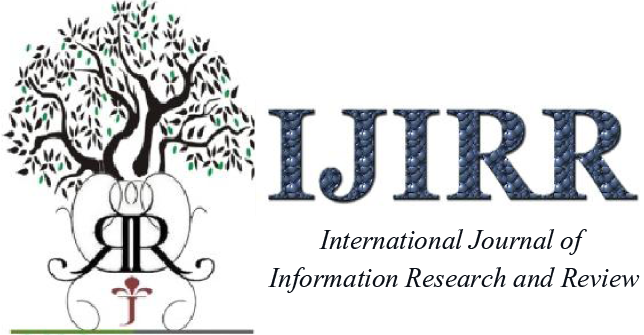



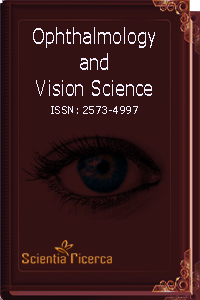
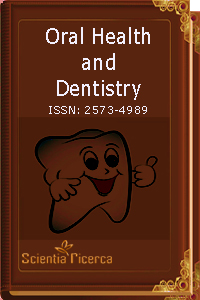
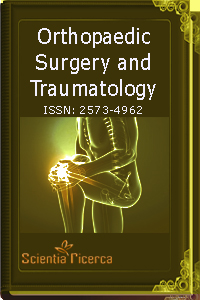
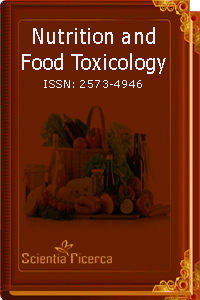
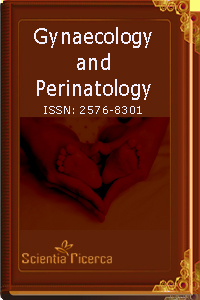
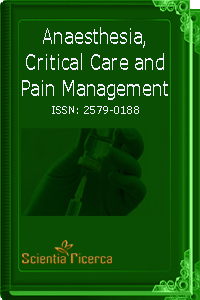
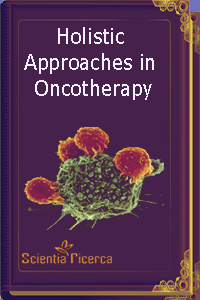
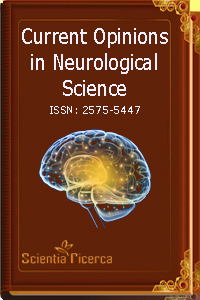
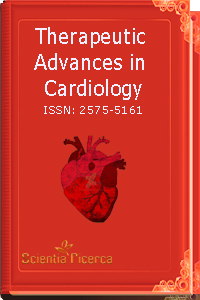
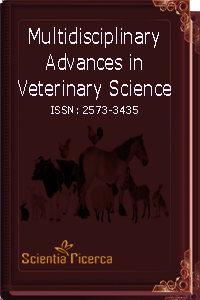
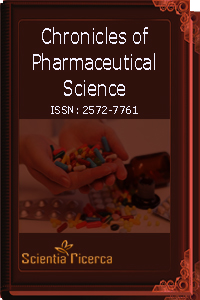
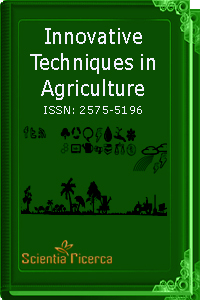
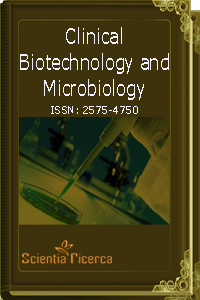
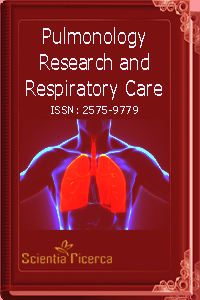
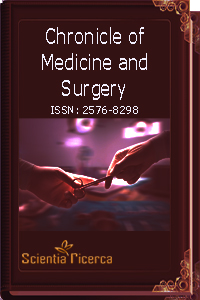
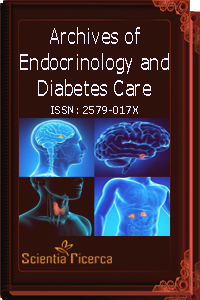
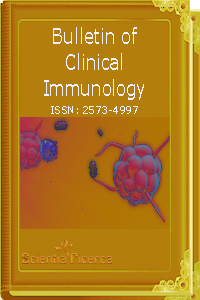
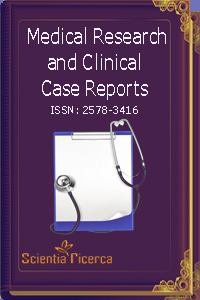
 Scientia Ricerca is licensed and content of this site is available under a Creative Commons Attribution 4.0 International License.
Scientia Ricerca is licensed and content of this site is available under a Creative Commons Attribution 4.0 International License.